If you are looking wholesale lighting solutions, click here.
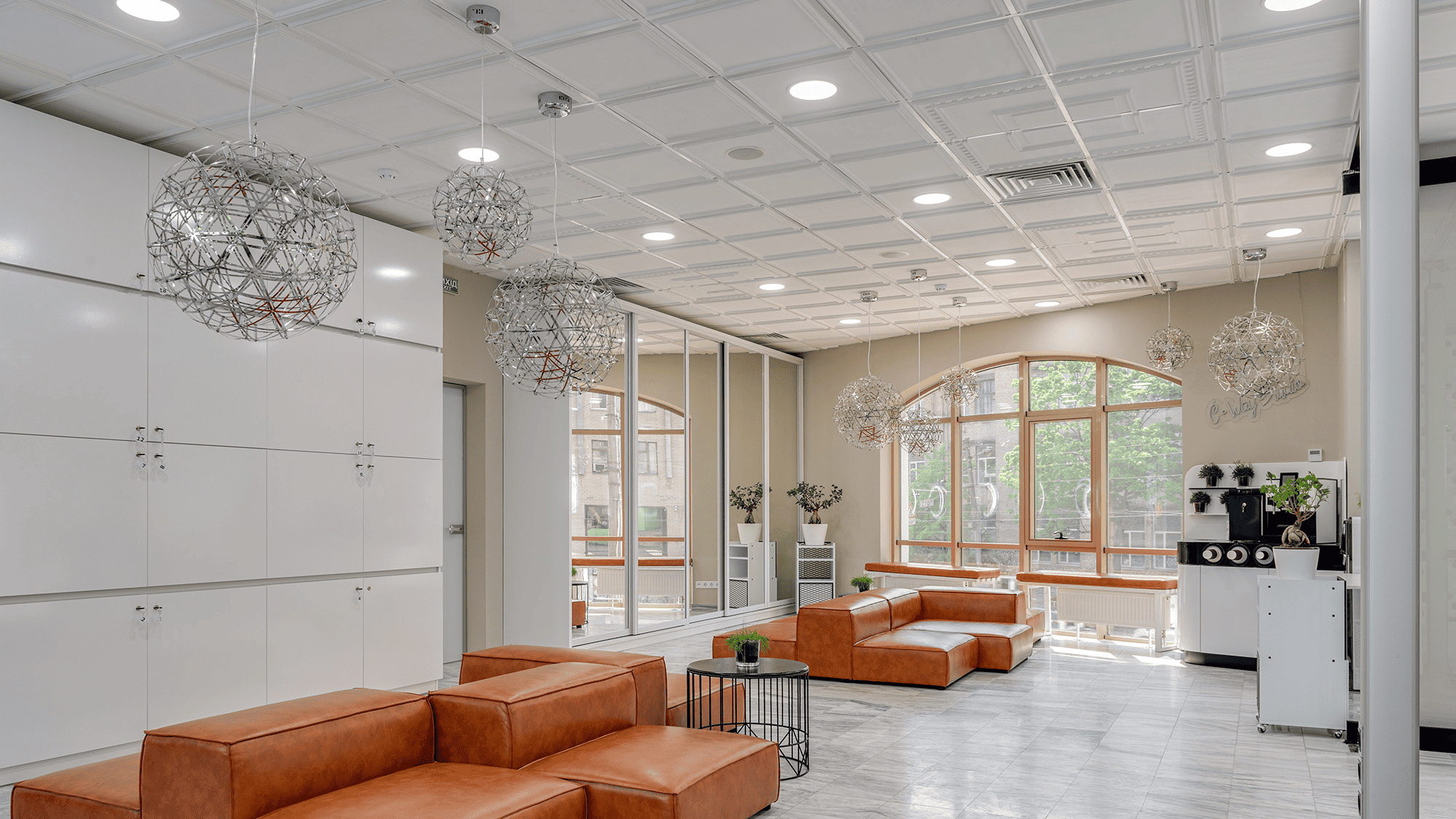
In this article, we shed light on the basics of recessed lighting, its types, applications, and the benefits it brings to your business.
Recessed lighting or downlighting is the installation of light fixtures in a hollow cavity in a ceiling. These light fixtures sit flush with the surface of the ceiling, seamlessly blending into the design and general aesthetic.
In parts of North America, recessed lighting fixtures are commonly sold under the branding of can lights or pot lights.

Modern recessed LED lights are smaller, brighter, and more energy efficient than any old-school incandescent light bulb, making them the go-to option for any residential or commercial building.
While most recessed lighting is ceiling-based, there is no hard and fast rule for its placement. You will commonly see recessed lights integrated into walls, the ground, or other architectural features.
Recessed lighting offers a subtle yet effective way to illuminate any area, befitting a sleek and modern design.
Recessed lighting is a diverse and flexible part of our modern design language. There are too many recessed lighting fixtures to list in a single section.
But we can cover the most common types based on installation location and application.
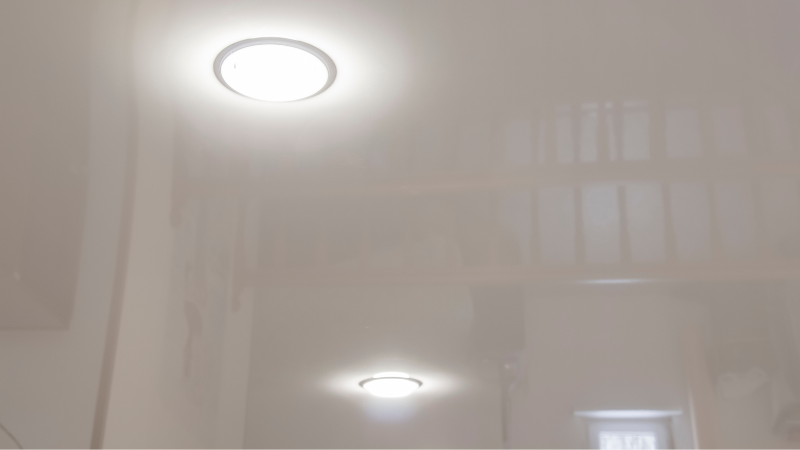
By far, the most common type of recessed light is the humble in-ceiling fixture. These light fixtures are designed to provide the maximum ambient light to a given space without interrupting that space’s aesthetics.
Ceiling lights are excellent for bedrooms, kitchens, classrooms, office spaces, large warehouses, mall interiors, and more.
Recessed ceiling lights produce less harsh shadows and glares as an overhead lighting solution, making them ideal for product showcases in retail spaces.
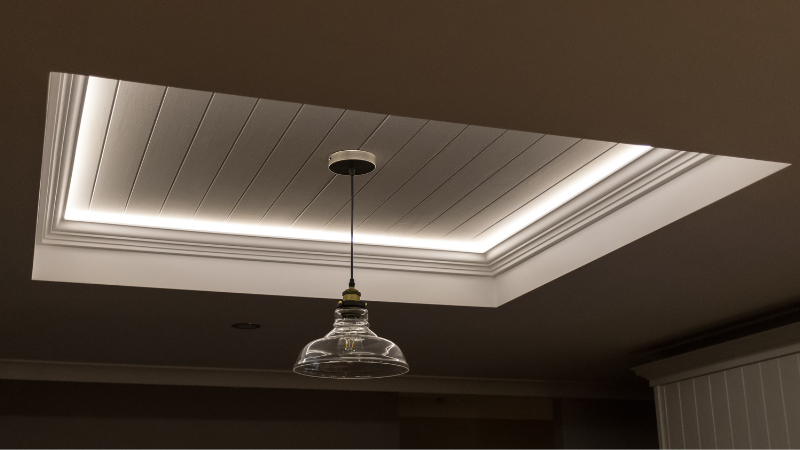
Wall lighting is more intrusive and often negatively impacts the desired ambiance. Recessed lighting fixtures that hide in the wall and maintain a neat and clean wall finish have become increasingly popular in the last few years.
These light fixtures are an excellent source of accent lighting that highlights the wall and its surroundings without stealing the show from your beautiful wall décor.
Wall lights enhance your museum floor, hotel hallways, restaurant décor, or bar counter.
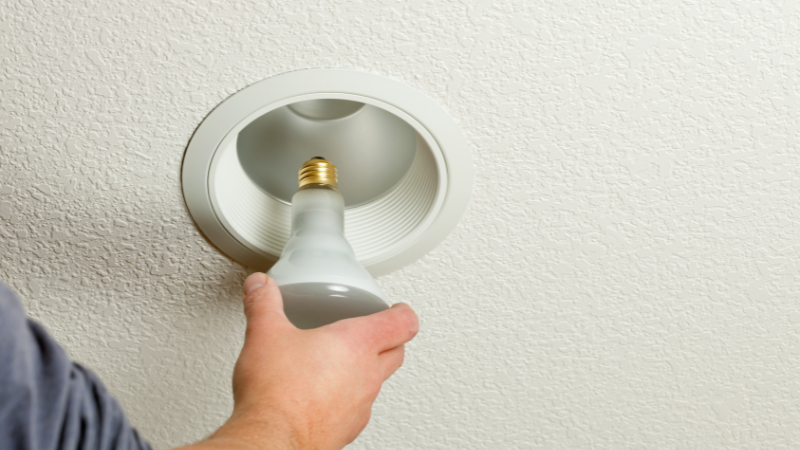
In-ground lighting fixtures are designed to illuminate a pathway without interfering with the functionality of the path. Most path lights have two major drawbacks.
Either they are too high, and the light shines in your face, harming your visibility, or they are too low, and you will constantly bump your feet against the fixtures.
Recessed lighting solves both these issues by offering a simple lighting solution that is out of your way while still providing you with the safety of a well-lit pathway.
In-ground LED lights are incredibly useful for garden walkways, garage driveways, or just general front yard pathway lighting.
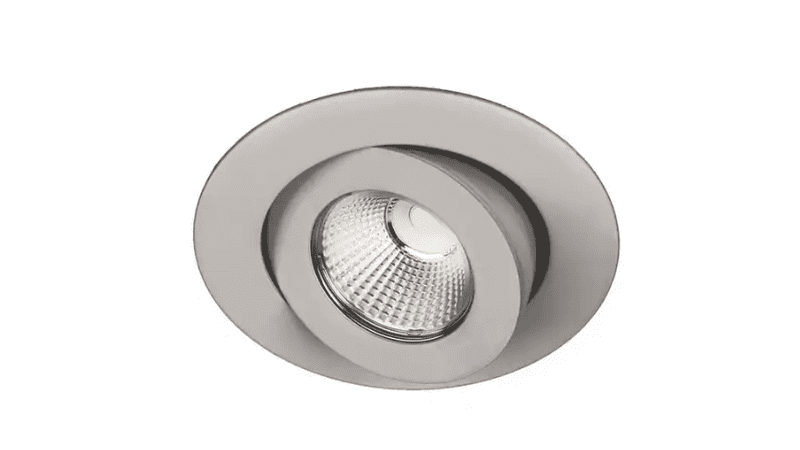
Recessed lights also come with adjustable trim options. This small change allows you to adjust the direction of the LED recessed lighting with a simple finger tap.
Primarily used for task lighting, the adjustable recessed LED bulbs are more useful than you might initially think.
You can install adjustable recessed lighting trims in your closet ceiling, on your walls next to your hung artwork, or over your kitchen counters.
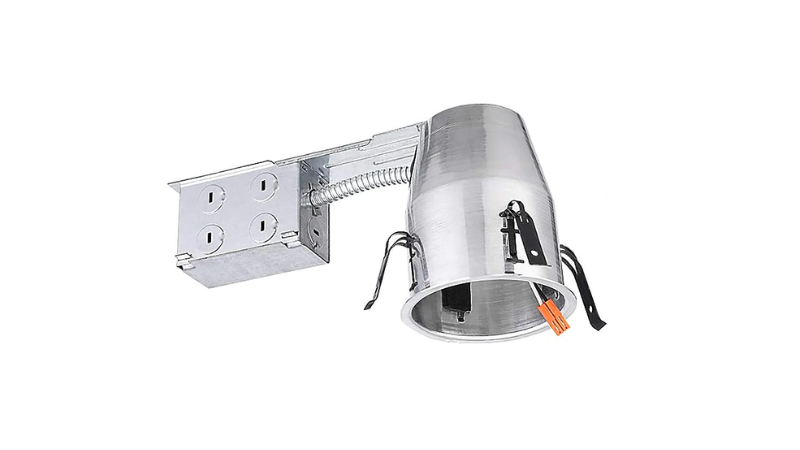
Remodel lights are recessed lighting kits for older buildings that don’t have the necessary infrastructure to support newer recessed light fixtures.
These retrofit kits are ideal for older apartment buildings, ancestral homes, historic structures, etc.
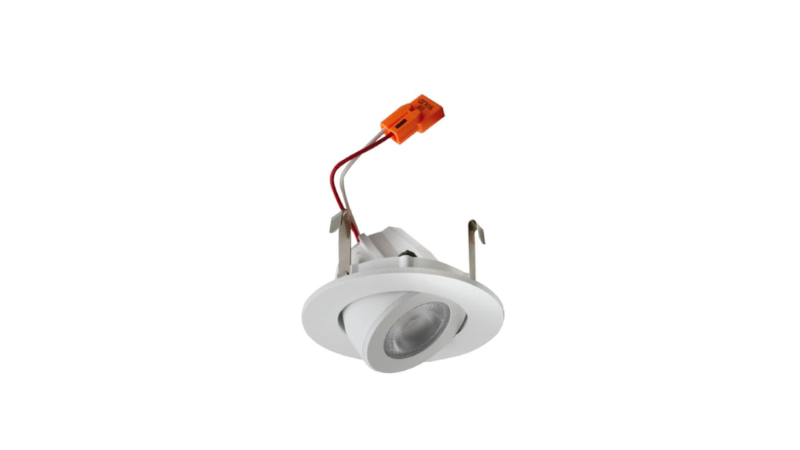
Installing recessed lights requires space for the light fixture, the mounting tools, and the accompanying electronics. While the result is great, not every location has the necessary wall or ceiling space to accommodate recessed lights.
Low-profile light fixtures are useful for retrofitting and for hard to get to locations like a garage door’s roof.
Recessed lights bring a certain classiness and sleekness to your indoor space. Additionally, you get all the benefits associated with LED bulbs in an attractive package.
Here are some of the many benefits recessed lighting brings to the table.
Recessed lighting fixtures are tiny compared to the traditional hanging light bulbs of the past. Their smaller and flatter design language lets them sit flush with the ceiling or wall, eliminating the need for protruding elements.
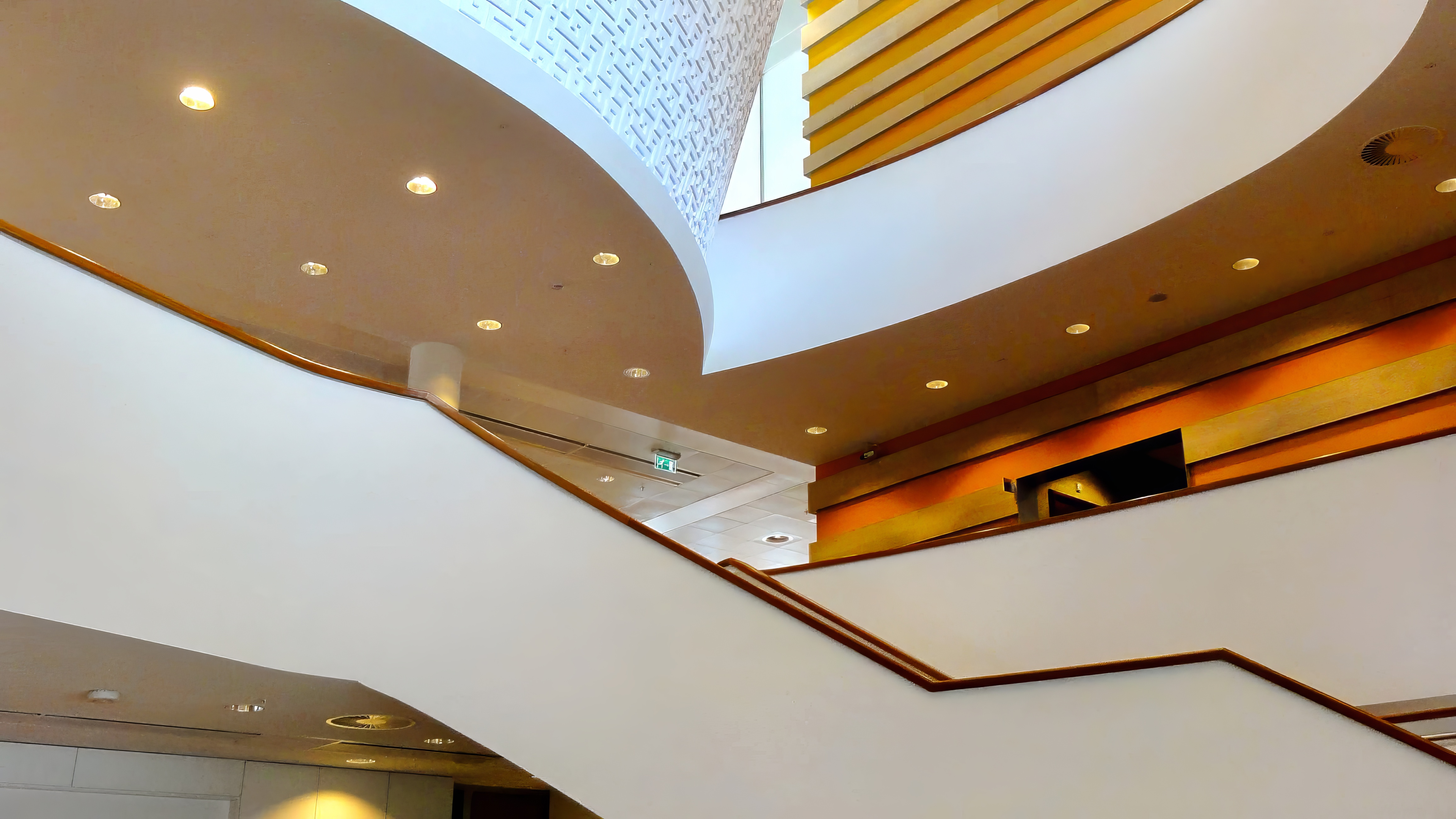
The space-saving design allows for a clean, uncluttered look, making rooms more open and spacious. LED lights become part of your house, not some afterthought hurriedly slapped on the ceiling.
Modern recessed lighting fixtures are mostly LED-based. The smaller, compact design of LEDs perfectly aligns with the recessed lighting goals.
Those compact LEDs come with excellent energy efficiency, which reduces your electricity costs, decreases light bulb-generated heat, and improves fixture longevity.
For large businesses, switching to LED recessed lights will yield significant cost savings in the long run. LEDs also reduce our carbon footprint and environmental impact, helping businesses achieve those sustainability goals.
Recessed fixtures are versatile and fit with nearly every type of lighting design. You can get wide beam angle fixtures for more light or narrow beam angle ones for more precise task lighting.
Next, you have a huge variety of recessed lighting trim options. Go with the classic baffle trim for a smooth transition between the ceiling and the LED bulb, a reflector trim for more light, or a standout decorative trim.
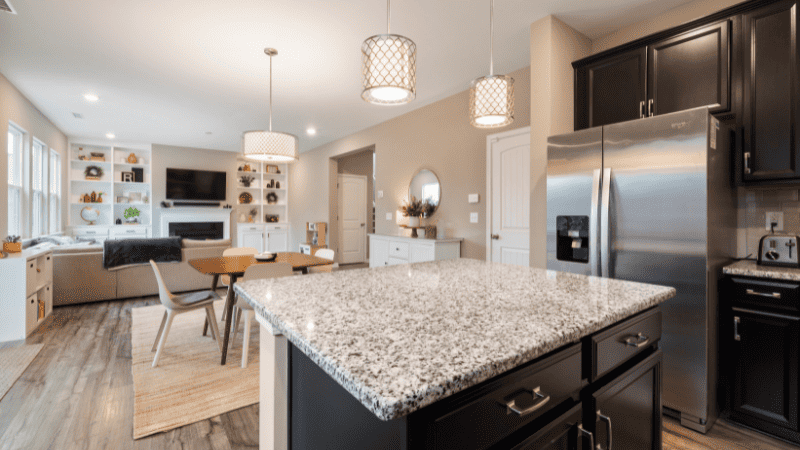
A recessed light fixture is just another tool in your lighting design arsenal.
Lighting and visual comfort should go hand in hand. A common frustration with traditional lighting setups is the sharp glare. As the lighting intensity increases, the light glare becomes more irritating to the human eye.
The solution is either a bulky light diffusion layer or to move the light fixture to a different location, out of your direct line of sight. Overhead recessed fixtures come with a basic diffusion layer and are placed so the light doesn’t shine directly in someone’s eye.
Higher CRI (color rendering index) and warmer temperature LEDs further increase visual comfort without compromising lighting quality.
Lighting design can be a part of your overall visual aesthetic. Whether it’s a clothing store, restaurant, or apartment building, you can get recessed light fixtures that complement and enhance your interior design.
Additionally, various trim styles and finishes are available, allowing for customization to match different interior designs.
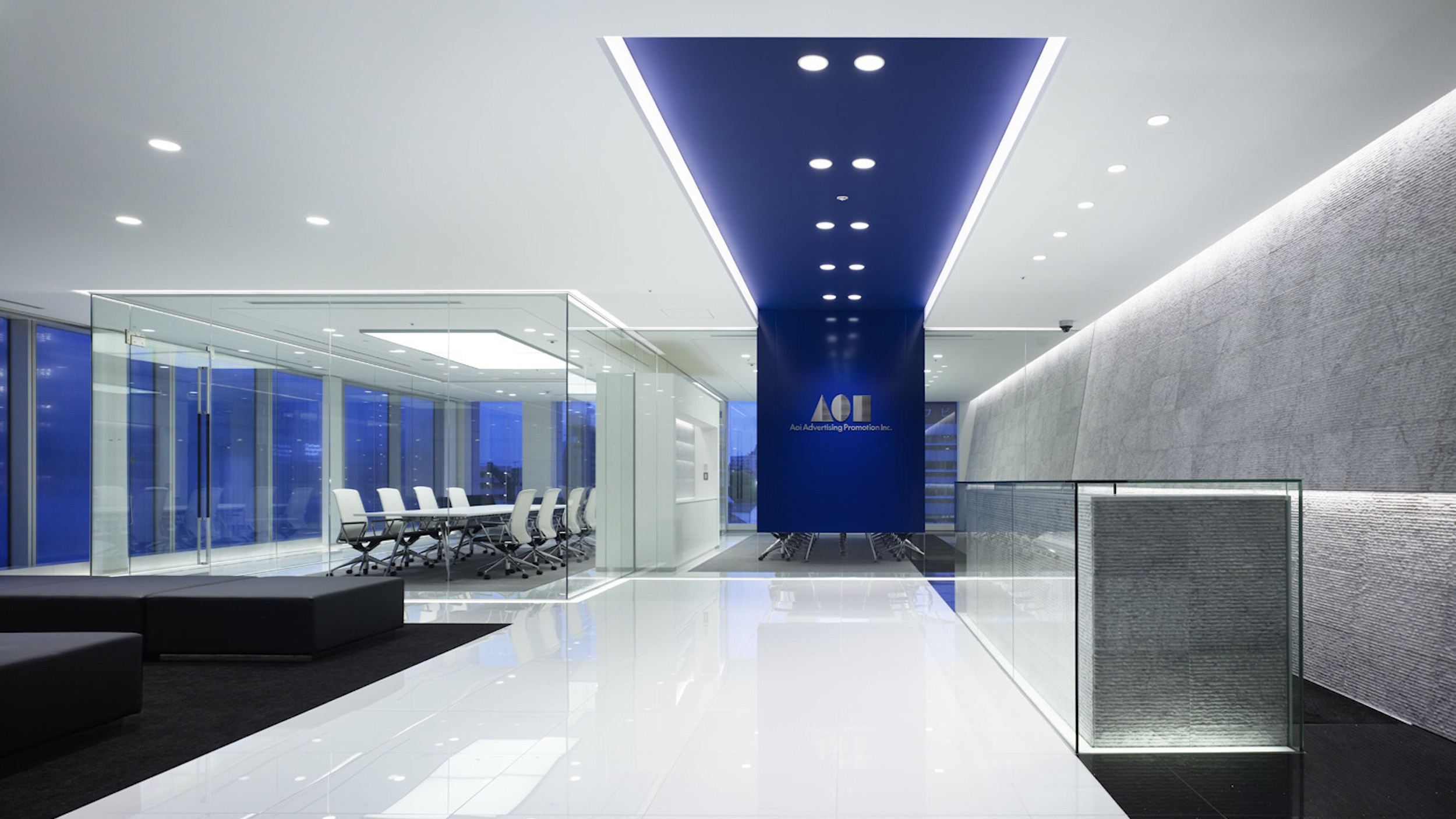
There are recessed lighting fixtures available for every industry and application. Choosing the right one for your business is all about assessing your requirements and managing your budget.
Consider the size of the room where the recessed lighting will be installed. Larger rooms require higher wattage or multiple fixtures to ensure adequate illumination.
Ceiling height is another big deciding factor for your lighting area. High ceilings will benefit from wide beam angle fixtures, adjustable trims, and higher wattages for complete coverage.
Color temperature (CCT) defines the hue of an LED bulb and is measured in Kelvins (K). Higher values represent warmer temperatures (e.g., 2700K) that create a cozy atmosphere, while lower values are for cooler temperatures (e.g., 4000K) that are more invigorating.
Once your color temperature requirements are finalized, you want to focus on color consistency throughout the space. If you have multiple recessed lights in the same area, choose bulbs with the same color temperature to maintain a cohesive look.
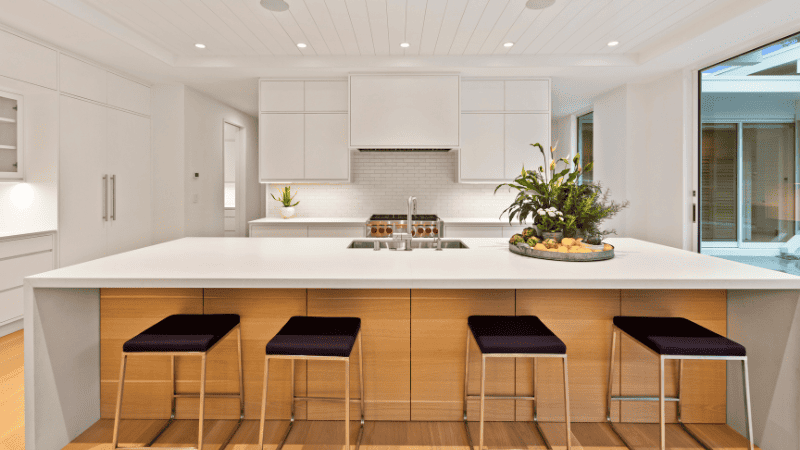
Trim is the outer ring on a recessed lighting fixture. Trim options range from simple flat designs that blend in with the ceiling or wall to elaborate, premium-looking designs that act as decoration pieces.
Trims aren’t just for show. They have a practical purpose, too. Baffle trims reduce glare, adjustable trims help control light direction, and a wall wash trim changes the tilt of the light beam.
Recessed lighting fixtures are generally compatible with LED bulbs but can also support CFLs. The primary compatibility restriction comes from the size of the fixture.
Also, ensure compatibility with additional lighting features, like dimmer switches, that allow you to adjust the brightness of a fixture with a single tap.
While the recessed design is sleek and modern, it’s hard to reach in a pinch, especially with high ceilings. Some fixtures are designed for easy bulb replacement, while others prioritize aesthetics over convenience.
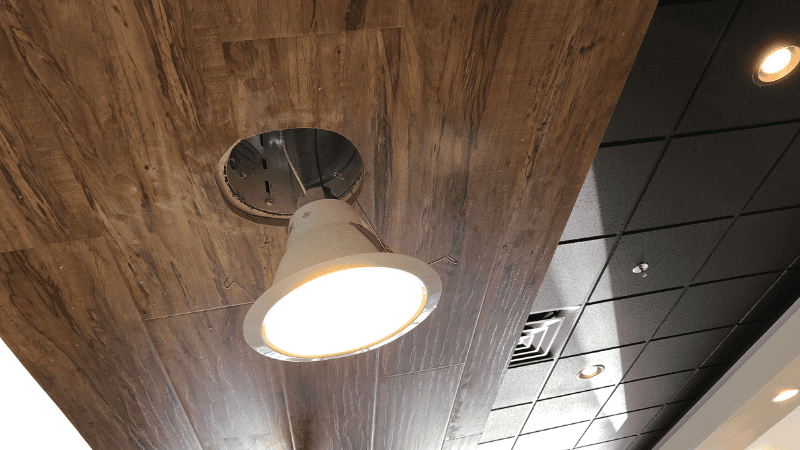
You can reduce your maintenance requirements by installing high-quality LED fixtures that last longer. Alternatively, you can pick mounting locations that are relatively easy to reach, reducing the time and effort required for bulb replacement.
Finally, you always want to check your lighting design’s energy consumption. LED bulbs consume less energy and last longer than halogen or incandescent bulbs. The annual cost savings might not be that impressive for smaller lighting designs.
But for larger businesses, the switch to LED recessed lighting can reduce energy consumption by a significant amount.
Always consult an experienced electrician or a lighting expert for the nitty gritty estimates.
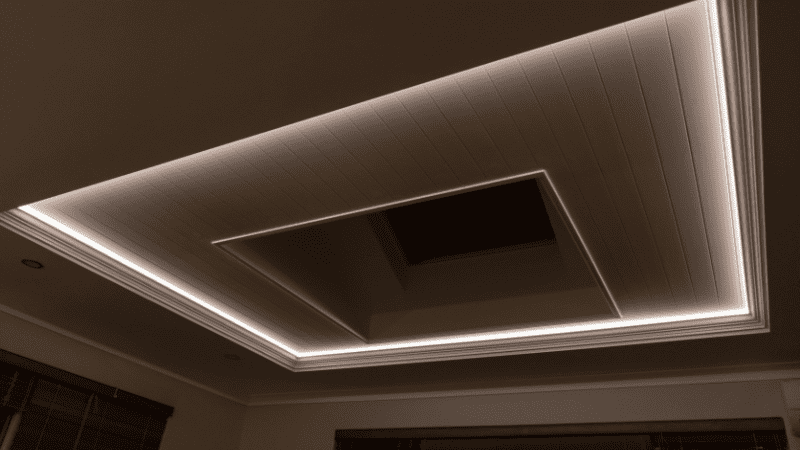
Light fixtures can run quite hot; even the slightest contact with in-wall or ceiling insulation can become a fire hazard.
The best-recessed lighting fixture is one that fits your lighting design. However, if we consider “the most value for the least amount,” the best overall fixture is a flat fixed downlight with a wide beam angle capable of 600 lumens.
Recessed light fixtures come in standard 4 or 6-inch sizes. 6″ fixtures have a wider light coverage and are better for general lighting, while 4″ recessed lights work best as task lighting.
While recessed lighting fixtures are relatively inexpensive, the labor cost of installing recessed lighting can vary greatly, depending upon the contractor and region.
The average US house has 12ft x 12ft rooms with a 9ft. ceiling. You will need four wide-angle recessed lights placed at equal distances from the center of your room. Larger rooms or rooms with higher ceilings will need more lights.
Lumen (lm) requirements vary by location and application. Bedrooms or living rooms need around 2,000 lm, while task areas like offices or classrooms need at least 5,000 lm. Finally, industrial spaces must be over 8,000 lm.
Recessed lighting is the centerpiece of a good lighting design. The one piece that ties your interior design and aesthetics together. It’s a simple, sleek, and elegant solution befitting modern residential and commercial spaces.
Whether you’re lighting a hotel lobby, factory hallways, supermarket aisle, or underground parking space, a recessed lighting setup is perfect for you.
Risun is a leading lighting solutions provider that caters to a global and diverse clientele. We offer one-stop lighting supply solutions, so you spend less time working on procurement and more time advancing your business.
Supply Chain Management is our specialty. We handle everything from product scouring to vendor negotiation to quality assessment and, finally, the shipping arrangements.
Let us help you get the best products for the lowest prices. Contact with Risun Today!
Comprehensive Lighting Solutions for MRO Wholesalers and Professionals
send your inquiry
Hi, I'm the author of this post, and I have been in this field for more than 15 years. If you want to wholesale lighting fixtures or lighting related product, feel free to ask me any questions.
Learn More >>Download our catalog to view all of our lighting products.
Ready to get started ?
Send Your InquiryOur team will get back to you promptly

please
download
Get notified about new products
Our team will get back to you promptly!
Add your first comment to this post